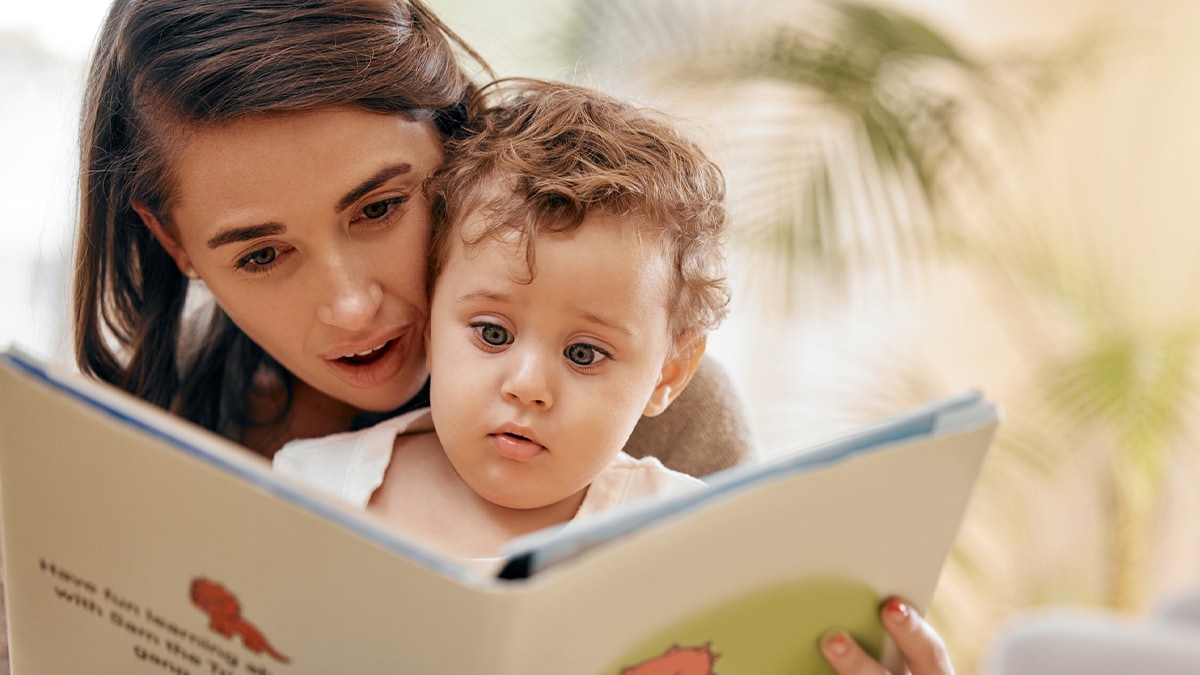Key points
- As a parent you give your children a good start in life—you nurture, protect, and guide them.
- Learn about developmental milestones, including emotional and social development, for toddlers from 1 to 2 years old.
- There are many things you can do to help your baby stay safe and healthy.

Developmental milestones
Skills such as taking a first step, smiling for the first time, and waving “bye-bye” are called developmental milestones. Most children achieve these milestones by a certain age. Children reach milestones in how they play, learn, speak, behave, and move (like crawling, walking, or jumping).
During the second year, toddlers are moving around more, exploring new objects, and are more aware of themselves and their surroundings. They tend to imitate the actions of adults and older children. During this stage, toddlers exhibit greater independence, may display defiant behavior, and can recognize themselves in pictures or a mirror. Toddlers also should be able to recognize the names of familiar people and objects, form simple phrases, and follow simple instructions.
Positive parenting tips

Following are some of the things you, as a parent, can do to help your toddler during this time:
- Ask them to find objects for you or name body parts and objects.
- Play matching games with your toddler, like shape sorting and simple puzzles.
- Encourage them to explore and try new things.
- Help to develop your toddler's language by talking with them and adding to words they start. For example, if your toddler says "baba," you can respond, "Yes, you are right―that is a bottle."
- Encourage your child's growing independence by letting them help with dressing themselves and feeding themselves.
- Respond to wanted behaviors more than you punish unwanted behaviors (use only very brief time outs). Always tell or show your child what they should do instead.
- Encourage your toddler's curiosity and ability to recognize common objects by taking field trips together to the park or going on a bus ride.
Child safety first
Because your child is moving around more, they will come across more dangers as well. Dangerous situations can happen quickly, so keep a close eye on your child. Here are a few tips to help keep your growing toddler safe:
- Do NOT leave your toddler near or around water (for example, bathtubs, pools, ponds, lakes, whirlpools, or the ocean) without someone watching them. Drowning is the leading cause of injury and death among this age group.
- Block off stairs with a small gate or fence. Lock doors to dangerous places such as the garage or basement. Fence off backyard pools.
- Ensure that your home is toddler proof by placing plug covers on all unused electrical outlets.
- Keep kitchen appliances, irons, and heaters out of reach of your toddler. Turn pot handles toward the back of the stove.
- Keep sharp objects such as scissors, knives, and pens in a safe place.
- Do NOT leave your toddler alone in any vehicle (that means a car, truck, or van) even for a few moments.
- Lock up medicines, household cleaners, and poisons.
- Store any guns in a safe place out of their reach.
Healthy bodies
Here are a few tips to help keep your growing toddler healthy:
- Give your child water and plain milk instead of sugary drinks. After the first year, when your nursing toddler is eating more and different solid foods, breast milk is still an ideal addition to their diet.
- Your toddler might become a very picky and erratic eater. Toddlers need less food because they don't grow as fast. It's best not to battle with them over this.
- Offer a selection of healthy foods and let them choose what they want. Keep trying new foods; it might take time for them to learn to like them.
- Your toddler will seem to be moving continually—running, kicking, climbing, or jumping. Let them be active—they're developing coordination and becoming strong.
- Make sure your child gets the recommended amount of sleep each night: 11–14 hours per 24 hours (including naps) for toddlers 1–2 years old.
For more information
CDC's "Learn the Signs. Act Early." Program has more details on how to track your child's developmental milestones, and what to do if you're concerned about your child's development.
CDC's Parent Information (Children 0–3 years) has information to help you learn how to give your child a healthy start in life.
CDC's Essentials for Parenting Toddlers and Preschoolers has ways you can help build a safe, stable, and nurturing relationship with your child.
CDC's Breastfeeding Information has answers to frequently asked questions about breastfeeding.
CDC's Information on Infant and Toddler Nutrition has tips for parents to help children maintain a healthy weight.
CDC's Protect the Ones You Love has information on how you can protect your child from drowning and other common causes of injury.
CDC's Information on Vaccinations provides the immunization schedule for infants and children and find out if your child's vaccinations are up to date.
The U.S. Department of Agriculture provides information on health and nutrition, My Plate for Infants and My Plate for Toddlers.
AAP's Healthy Children website provides information on feeding, nutrition, and fitness for all developmental stages from infancy to young adulthood.
Just in Time Parenting (JITP) has quality, research-based information to families at the time it can be most useful.
Healthy Kids Healthy Future has information on physical activity for young children and ways to keep them moving.
National Highway Traffic Safety Administration (NHTSA) has information on safety recalls and safety tips for children riding in motor vehicles, walking, biking, playing outside, waiting at school bus stops, and more.
National Institute of Child Health and Human Development (NICHD) Visit to learn how to reduce the risk of Sudden Infant Death Syndrome (SIDS) and safe sleep environments.
World Health Organization Information on Infant Nutrition has information to promote proper feeding for infants and young children.
